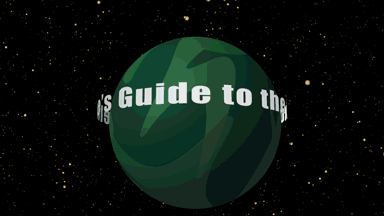Scienceline’s Guide to the Exoplanets: Earth’s Mirror
Gliese 1132 b: The most important exoplanet ever discovered?
Rahul Rao • August 31, 2020

Your favorite planets, and you didn't even know they existed. [Credit: Curtis Segarra | CC BY-NC-ND 2.0]
Earth’s Mirror
Gliese 1132 b
Discovered by: MEarth-South
Discovered: 2015
Distance from Earth: ~39 light-years
Mass: ~1.6 Earth masses
Radius: ~1.2 Earth radii
Surface climate: Boiling
Habitability for humans: No.
If someone on an Earth-like planet in a far distant star system were to look at our own solar system, and look at Venus, they might think it fairly close to Earth. After all, Venus is terrestrial; it’s very similar to Earth in size and mass; it’s within the edge of the Sun’s habitable zone; and it even has an atmosphere.
Of course, we know that Venus is an infernal mirror to Earth. But compare Venus to a hot Jupiter, or compare Venus to a frozen world like Pluto, or compare Venus to any planet orbiting the sterilizing nightmare world of a pulsar. Then Venus indeed becomes positively Earthlike.
Orbiting an otherwise insignificant red dwarf, twelve parsecs or so in the direction of the constellation Vela, is Gliese 1132, or GJ 1132, a world similar to Earth — at least until you realize that its temperatures are just as hot as Venus, if not more.
Yet, when GJ 1132b was discovered, it was met with great fanfare. One astronomer proclaimed it “arguably the most important planet ever found outside the solar system.”
Now, you might find that odd. Even when it was discovered, astronomers knew that GJ 1132b was hot; astronomers knew that the planet almost certainly couldn’t support liquid water or the sort of Earth-like habitable world that people on Earth so desperately want to find. But remember: compared to many of the other planets that orbit other suns out there, GJ 1132b is quite Earth-like.
Therefore, because it’s so close, and because it’s star is relatively dim, GJ 1132b offers a fascinating opportunity to easily glimpse an Earth-like planet.
And astronomers have, in fact, done just that. While some have claimed that a hydrogen-rich atmosphere shrouds the planet, later examinations have disproven that; either the planet has an atmosphere consisting of other elements, perhaps including aerosols. The answer remains unknown, pending further observations.
Astronomers think GJ 1132b may be tidally locked. Normally, that would mean that one side of the planet is melting hot in perpetual daylight, while the reverse is frozen in eternal night. And while that may be true, if GJ 1132b does in fact have an atmosphere, the picture would be much more complicated, with air being transferred across the planet’s surface.
And if that atmosphere is like that found on Venus, thick and insulating, then GJ 1132b might indeed be a strange mirror to Earth.